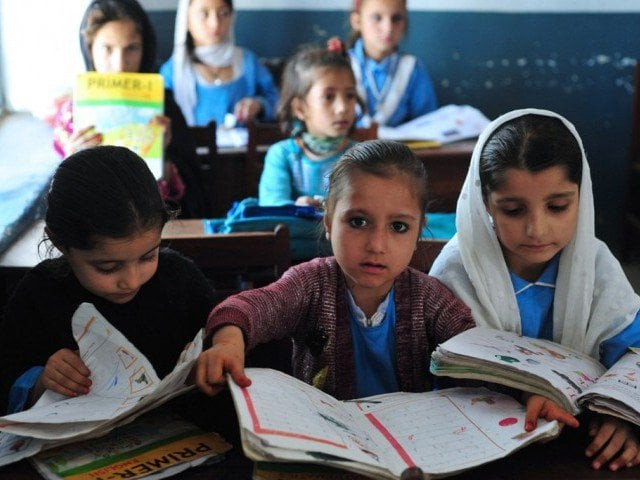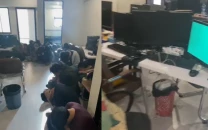Girls' education still a dream in K-P?
Early marriages, cultural stigmas prevent female students from reaching their true academic potential

Even as K-P's ailing education system has failed students across both the genders, female students have been disproportionately affected, with girls dropping out of school after the fourth or fifth grade across several districts.
Saima, whose name has been changed for privacy purposes, is a third grade student from the Dabir area of Upper Kohistan. Despite their passion for pursuing education, Saima and her three sisters had to bid farewell to education before they even reached middle school.
"Whenever people think of Kohistan, they associate it with a backward area. However, if the elders of the area are taken into confidence and are made aware of the importance of girls' education, the female literacy rate can be improved," said Saima.
Similarly, Alia Nisar, a third-grade student from Kolai Palace, told The Express Tribune that there were no large educational institutions in her area like those in Abbottabad, Peshawar and other districts.
"Female students go to school wearing a burqa as per local traditions, but perhaps most of the students stay at home or get married after the fifth grade due to which the number of female students studying up to matriculation or intermediate is very low," revealed Alia.
According to data obtained from the Khyber-Pakhtunkhwa Education Department, the census 2023 revealed that the overall female literacy rate in Turghar is 46.12 per cent, followed by Lower Kohistan, with a rate of 32.10 per cent, Bajaur with a rate of 29.12 per cent, Upper Kohistan with 28.10 per cent, Bajaur with 29.12 percent, and Kolai Palace with a female literacy rate of 14.13 per cent. The overall female literacy rate in the province is just 15.37 per cent.
Discussing the literacy rate among women in Khyber-Pakhtunkhwa, educationist and Chairperson of Gender Studies at the University of Peshawar, Dr Anoosh Khan, while talking to The Express Tribune, opined that female literacy was directly correlated with male literacy.
"If there is an educated man in the family, he will ensure that daughters are educated. Hence, there is a need to innovate the education system for men as well as women in Kohistan and other underdeveloped areas. A major reason for the decline in female literacy rate in Kohistan is the lack of female teachers. When the doors of education for local women are closed, teachers coming from other districts are unable to attend regularly because of a lack of hostel and accommodation arrangements," noted Dr Khan, who further observed that female students from these remote areas often moved to developed cities for going to college or university and often settled there hence, preventing the literacy rate of their indigenous areas from improving.
District Education Officer Upper Kohistan Muhammad Ashraf told The Express Tribune that the literacy rate of men in Kohistan is just 24 per cent while there are a total of 202 schools, out of which, seventy percent of the schools are vacant. "There are many challenges in the education system here. Girls do not go to school beyond the third grade. Out of 200 schools for girls, only 67 are functional. The education department is taking steps to raise awareness. Hopefully, the literacy rate will increase in the future," said Ashraf.


















COMMENTS
Comments are moderated and generally will be posted if they are on-topic and not abusive.
For more information, please see our Comments FAQ